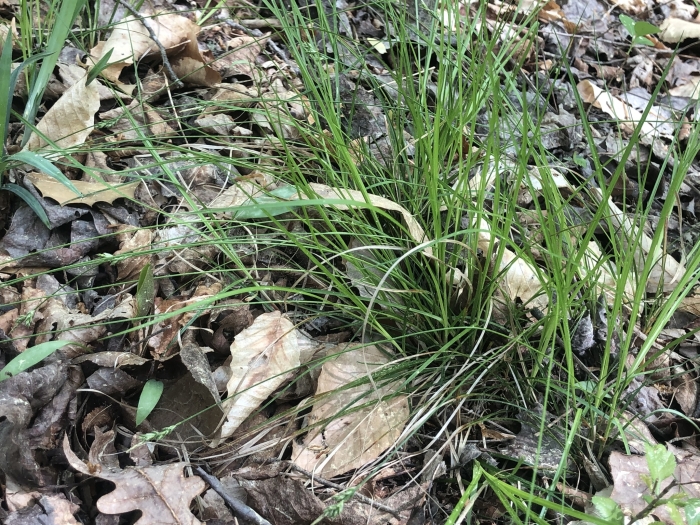Whitetinge Sedge
(Carex albicans)
Whitetinge Sedge (Carex albicans)
/
/

John Kees
Public Domain
Image By:
John Kees
Recorded By:
Copyright:
Public Domain
Copyright Notice:
Photo by: John Kees | License Type: Public Domain | License URL: http://creativecommons.org/publicdomain/zero/1.0/ | Rights Holder: John Kees | Publisher: iNaturalist | Date Created: 2021-04-10T18:36:01Z |



























Estimated Native Range
Summary
Carex albicans, commonly known as Whitetinge Sedge, is a deciduous perennial grass native to the understory of deciduous forests, open woodlands, and savannas in the Eastern United States and Ontario. It typically grows to a height and width of 1-2 feet (0.3-0.6 meters), forming dense clumps of fine-textured foliage. The leaves are narrow and grass-like, with a distinctive white edge that gives the plant its common name. Whitetinge Sedge produces inconspicuous greenish-brown flowers in late spring, followed by small, seed-filled fruits that mature in early summer. The fruits are an important food source for wildlife and are dispersed in part by ants, a process known as myrmecochory.
Whitetinge Sedge is valued for its adaptability and texture in garden settings, making it an excellent choice for naturalistic plantings, rain gardens, and as a ground cover in shaded areas. It is also used for erosion control due to its clumping habit and fibrous root system. This sedge thrives in part shade to full shade and prefers moist, well-drained soils, but it can tolerate a range of soil conditions, including dry shade once established. While generally low-maintenance, it can be susceptible to leaf spot diseases in overly wet conditions.CC BY-SA 4.0
Whitetinge Sedge is valued for its adaptability and texture in garden settings, making it an excellent choice for naturalistic plantings, rain gardens, and as a ground cover in shaded areas. It is also used for erosion control due to its clumping habit and fibrous root system. This sedge thrives in part shade to full shade and prefers moist, well-drained soils, but it can tolerate a range of soil conditions, including dry shade once established. While generally low-maintenance, it can be susceptible to leaf spot diseases in overly wet conditions.CC BY-SA 4.0
Plant Description
- Plant Type: Grass, Herb
- Height: 1-1.5 feet
- Width: 1-1.5 feet
- Growth Rate: Moderate
- Flower Color: N/A
- Flowering Season: Spring
- Leaf Retention: Deciduous
Growth Requirements
- Sun: Part Shade, Full Shade
- Water: Medium
- Drainage: Slow, Medium, Fast
Common Uses
Bird Garden, Deer Resistant, Drought Tolerant, Erosion Control, Groundcover, Low Maintenance
Natural Habitat
Understory of decidarious forests, open woodlands, and savannas
Other Names
Common Names: Whitetinge Sedge, Bellow-Beaked Sedge, Pennsylvania Sedge, Blunt-Scale Oak Sedge, Closely-Covered Sedge, Dry Woods Sedge, White-Tinged Sedge, Carex À Écailles Marginées, Stellate Sedge
Scientific Names: , Carex albicans, Carex davisiae, Carex davisiae f. glabrescens,
GBIF Accepted Name: Carex albicans Willd. ex Spreng.